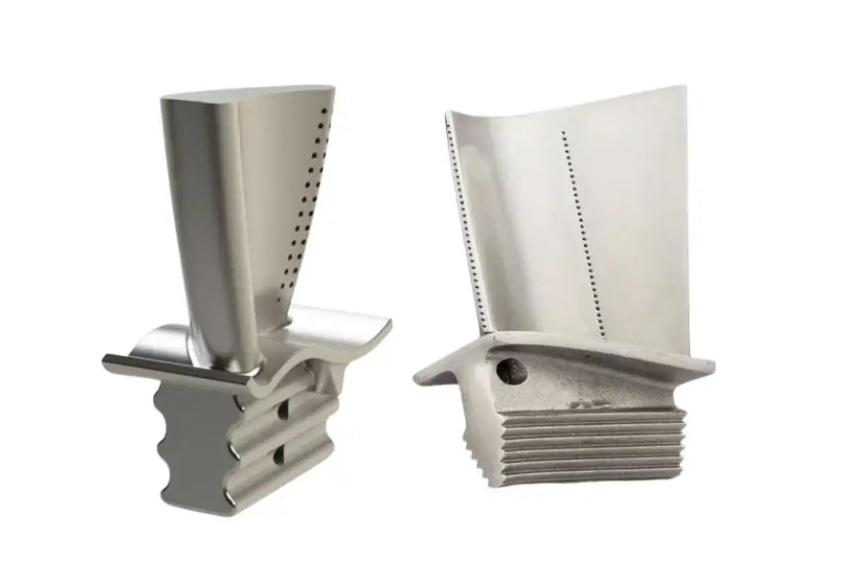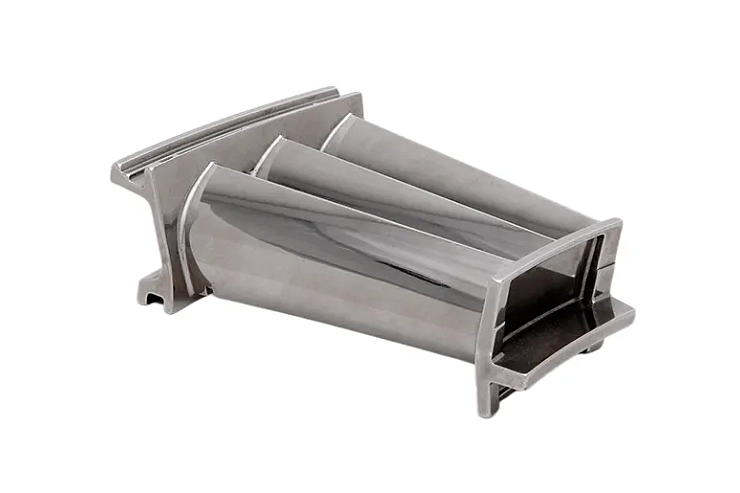Precision Wax Pattern Creation: Enhancing Accuracy for Complex Superalloy Components
Precision wax pattern creation plays a critical role in the investment casting of superalloy components, enabling the manufacture of complex, high-performance parts used across industries like aerospace, defense, and power generation. This process is integral to achieving the dimensional accuracy and surface finish required for superalloy components that endure extreme temperatures and mechanical stresses.
By understanding how precision wax patterns are created and their impact on the final casting, manufacturers can improve component quality, minimize defects, and enhance overall performance. Wax pattern creation allows for producing highly detailed and intricate components, essential for applications where failure is not an option. This crucial step ensures that the investment casting process achieves the required precision and consistency, resulting in superalloy parts with optimal mechanical properties and surface integrity.

Manufacturing Process: Precision Wax Pattern Creation in Superalloy Casting
The investment casting process begins with creating a wax pattern that serves as the model for the final superalloy part. Precision wax pattern creation is essential to ensure the highest quality and accuracy in the finished component. The process starts with injecting molten wax into precision molds to form the desired shape. The wax is cooled to create a solid pattern replicating the exact geometry of the intended part, including any intricate internal features. Precision wax pattern creation is critical to achieving detailed features in parts such as turbine blades or combustion chambers, where intricate geometries are necessary.
The wax pattern must be highly accurate, as any discrepancies will be transferred into the final cast, potentially causing dimensional defects or compromising part performance. Therefore, precise control over the injection process is crucial. Automation plays a significant role in achieving consistent results. Modern wax injection machines can maintain precise temperature and pressure control, ensuring uniform wax flow and optimal mold filling. This eliminates common issues like air pockets or uneven thickness, which could lead to defects. Automated wax press systems improve consistency and ensure reliable manufacturing, while precise injection techniques reduce the risk of defects during the pattern creation process.
In addition to automated injection, the design of the wax pattern is another critical factor. Complex geometries and internal features, such as cooling channels in turbine blades, can only be effectively created through precision wax patterning. The accuracy of the wax pattern ensures that the mold captures every intricate detail, which is particularly important for components used in high-stress applications where even the slightest imperfection can lead to failure. Precision in mold design is key to achieving the desired component integrity, while complex geometry creation ensures that the final cast retains the highest level of detail and structural reliability.
Once the wax pattern is formed, it is carefully inspected for any defects, and dimensional measurements are taken using advanced techniques like laser scanning and Coordinate Measuring Machines (CMM). This ensures that the pattern meets the required tolerances before it proceeds to the next steps in the investment casting process. Dimensional control during the wax pattern stage is crucial to achieving final part accuracy, and laser scanning ensures that even minute details are captured for precise casting.
Typical Superalloys Used in Precision Wax Pattern Creation
Investment casting with precision wax patterns is typically used to create superalloy components. Superalloys, such as Inconel, CMSX series, Hastelloy, Rene alloys, and various Nimonic alloys, are known for their high-temperature resistance, strength, and oxidation resistance, making them ideal for critical applications in industries like aerospace, power generation, and defense.
Inconel Alloys
Inconel, for example, is widely used for turbine blades, gas turbines, and combustion chambers due to its excellent thermal stability and resistance to high-temperature corrosion. Precision wax patterning ensures these complex parts are accurately replicated with minimal distortion or shrinkage.
CMSX Series
CMSX alloys, commonly used for single-crystal casting of turbine blades, require extreme precision to maintain the integrity of their crystal structure. The precise control over wax pattern creation helps to maintain this structure throughout the casting process, which is crucial for ensuring optimal mechanical properties in high-stress environments.
Rene Alloys
Rene alloys, with their high strength and resistance to creep at elevated temperatures, are used in aerospace and defense applications. The precision wax patterning process is vital for ensuring that these superalloys are cast into components that meet the rigorous performance demands of such industries.
Nimonic Alloys
Nimonic alloys, mainly known for their resistance to thermal fatigue and creep, are commonly used in gas turbine applications. The high precision in wax pattern creation allows for the production of complex shapes and ensures the final parts exhibit the required mechanical strength and thermal stability.
Post-Processing Steps After Wax Pattern Creation
Once the wax pattern is created, it must be carefully integrated into the broader investment casting process. This process involves several steps, including mold building, wax pattern removal, and post-casting treatments. During this stage, post-processing techniques like heat treatment and superalloy welding can significantly enhance the material properties of the final component.
After the precision wax pattern is created, it is coated in a fine ceramic shell. This shell must be applied in thin layers to ensure an even surface finish. The mold is then heated to remove the wax pattern, leaving a hollow ceramic shell behind. The shell is subsequently fired at high temperatures to solidify it, preparing it for molten superalloy casting. The importance of surface finish in superalloy castings ensures that the mold supports an even casting, while thermal barrier coatings are often applied to further enhance performance.
The precision of the wax pattern has a significant impact on the subsequent post-processing steps. A highly accurate wax pattern reduces the likelihood of defects during the shell-building process, ensuring the shell has the correct dimensions to support the molten metal. This minimizes the need for rework, which can add significant costs and time to the manufacturing process. By improving precision in casting during the early stages, the need for post-casting corrections is significantly reduced.
After the mold is created, the superalloy is poured into the shell. The high-temperature molten metal takes on the exact shape of the pattern, including any intricate features or internal structures. Once the metal solidifies, the mold is broken away to reveal the cast component. The role of HIP in eliminating porosity and ensuring structural integrity is vital in this stage, helping the casting maintain its dimensional stability and mechanical strength.
Post-casting processes like heat treatment, surface finishing, and machining are carried out to bring the component to its final specification. The quality of the wax pattern significantly affects the amount of work required during these steps. More accurate patterns result in less material that must be removed during machining and polishing, reducing production time and cost. This is why precision machining and surface finishing techniques play a key role in minimizing defects and reducing costs.
Testing and Quality Control in Superalloy Investment Casting
Testing and quality control are essential for ensuring that superalloy components produced through precision wax pattern creation meet the stringent requirements of aerospace, power generation, and defense industries.
Non-Destructive Testing (NDT)
Non-destructive testing (NDT) methods are commonly employed to inspect the integrity of the cast components. X-ray inspection, ultrasonic testing, and CT scanning can identify internal defects such as voids, cracks, or inclusions that could compromise part performance. These techniques are essential in superalloy casting, where even minor defects can significantly impact the component’s ability to withstand high stresses and temperatures.
Metallographic Analysis
Metallographic analysis is another critical test. By examining the microstructure of the superalloy using techniques like scanning electron microscopy (SEM) and optical microscopy, manufacturers can assess the alloy’s grain structure, phase distribution, and other critical factors that influence mechanical properties like strength and creep resistance. These tests ensure that the casting process has maintained the desired material properties throughout the component.
Dimensional Accuracy
Dimensional accuracy is also a key aspect of quality control. CMM and laser scanning techniques verify that the final superalloy component meets the precise dimensions specified in the design. These tools offer high-resolution measurements that can detect even minute variations in size or shape, ensuring that the part will fit seamlessly into its intended application.
Applications of Precision Wax Patterns in Industry
Precision wax pattern creation is indispensable in industries that require high-performance, complex components, particularly those made from superalloys. The aerospace industry, in particular, relies heavily on investment casting to produce turbine blades, combustion chambers, and other critical components. These parts are exposed to extreme temperatures and stresses, making precision casting essential for maintaining performance and reliability.
Aerospace and Aviation
In the aerospace and aviation industry, precision wax pattern casting creates turbine blades, combustion chambers, and other critical components. Gas turbines used in aircraft engines are one of the most common applications for precision-cast superalloy components. The turbine blades must withstand extreme heat and centrifugal forces while maintaining their structural integrity. Precision wax patterning ensures that these blades are cast with the exact geometry required to achieve optimal airflow, efficiency, and heat resistance. This technology is critical in manufacturing superalloy jet engine components, ensuring they can endure high-temperature environments without compromising performance.
Power Generation
In the power generation industry, superalloy components like turbine blades and heat exchangers are manufactured using precision wax pattern creation to withstand the intense heat and pressure in steam and gas turbines. The high-precision casting of these components ensures optimal thermal efficiency, durability, and resistance to oxidation under harsh operational conditions. For example, superalloy heat exchanger parts are designed to handle extreme temperature differentials, ensuring reliable performance in energy systems over time.
Automotive
The automotive industry also benefits from this process, particularly in manufacturing high-performance engine components, such as exhaust systems and turbochargers, which must operate at high temperatures. Precision wax patterning is used to produce complex, high-precision superalloy exhaust system parts, which are essential for efficiently operating high-performance vehicles and systems that must resist thermal and mechanical stresses over prolonged use.
Defense and Military Applications
Military and defense applications require precision wax pattern casting to produce components like missile parts, armor systems, and propulsion units. These components must meet the highest strength, precision, and reliability standards. For example, superalloy armor system parts are fabricated using this technique to ensure they can withstand extreme impacts and harsh environmental conditions. Additionally, precision casting is used in creating missile components and propulsion systems, ensuring the integrity and reliability of these high-stakes technologies.
In each of these industries, the use of precision wax patterns enables the manufacture of high-performance superalloy components that are both complex in design and able to meet the stringent demands of their respective applications. The ability to cast components with exceptional accuracy and consistency ensures that critical parts can operate efficiently and reliably, even in the most challenging environments.
5 FAQs:
What are the key advantages of using precision wax pattern creation for superalloy casting?
How does precision wax patterning ensure the accuracy of complex geometries in superalloy components?
What post-processing steps benefit most from using precision wax patterns in superalloy casting?
How does the precision of wax patterns impact the testing and quality control of superalloy parts?
What industries and applications rely on precision wax pattern creation for superalloy components?



